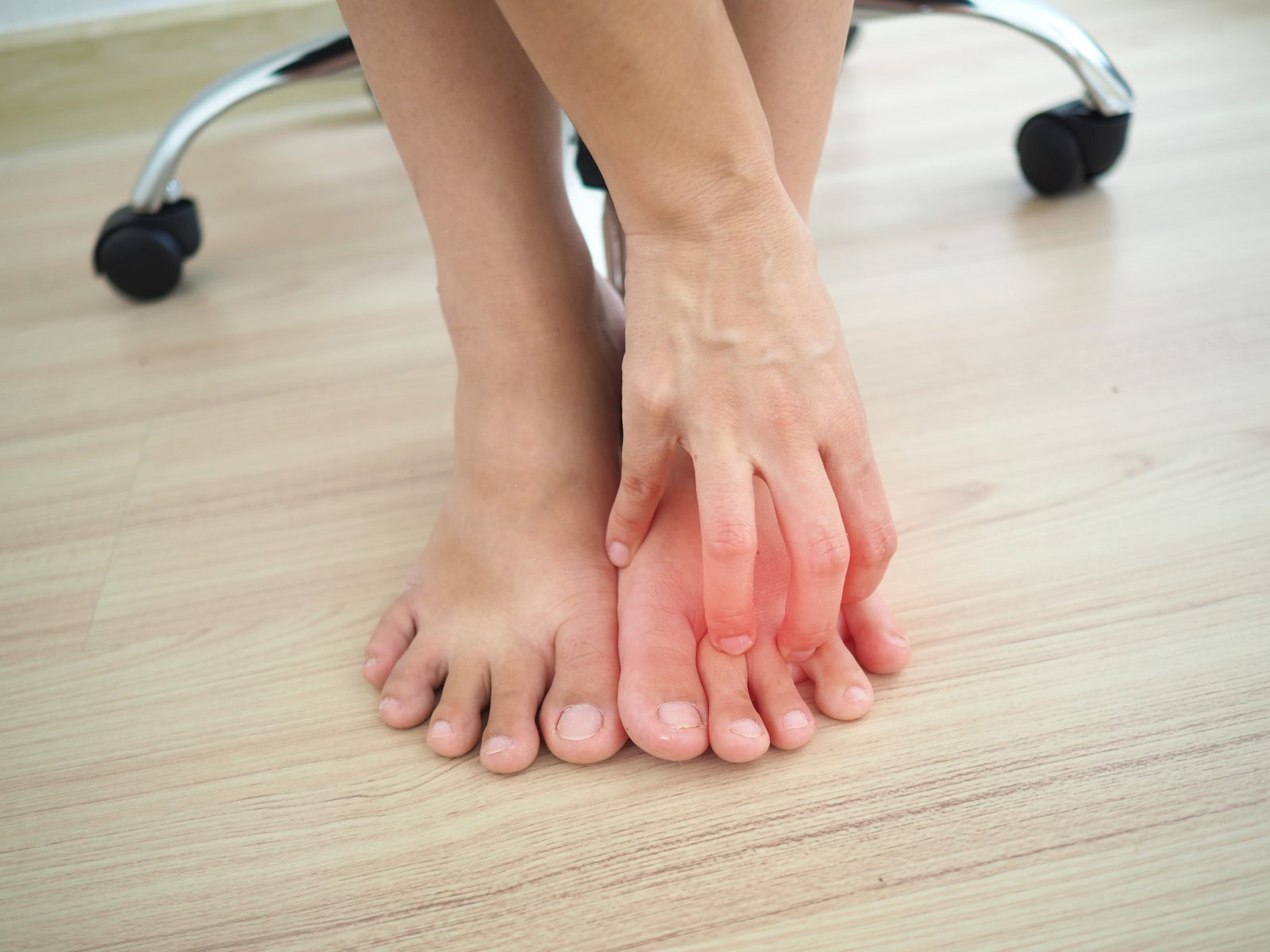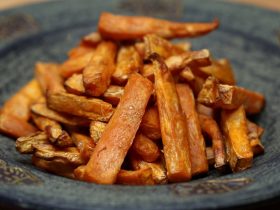Psoriatic arthritis is a chronic inflammatory condition that affects both the skin and joints. Managing weight can be particularly challenging for individuals with psoriatic arthritis due to the pain and mobility issues associated with the disease. In this article, we will explore effective weight loss strategies tailored to the unique needs of people living with psoriatic arthritis.
Before delving into weight loss strategies, it’s essential to have a basic understanding of psoriatic arthritis. This autoimmune disease causes inflammation in the joints and skin, leading to symptoms such as joint pain, stiffness, and skin rashes.
Maintaining a healthy weight is crucial for individuals with psoriatic arthritis. Excess weight can place additional stress on the joints, exacerbating pain and inflammation. Moreover, obesity is linked to a higher risk of developing other health issues like cardiovascular disease and diabetes.
John Davis, III, MD, a clinical rheumatologist who specializes in psoriatic arthritis at the Mayo Clinic in Rochester, Minnesota, describes the relationship between obesity and psoriatic arthritis as “very complex and not adequately understood.
Heart disease, diabetes, and metabolic syndrome have all been associated with psoriatic arthritis. When it comes to all of these, “losing weight and maintaining weight in a healthy range is important,” says Melissa Ann Prest, DCN, RDN, a spokesperson for the Academy of Nutrition and Dietetics.
Losing weight has been shown to reduce the severity of psoriatic arthritis symptoms like aching joints and exhaustion. Dr. Davis believes that this is due to a decrease in inflammation.
Losing as little as 5 to 10 percent of your body weight can improve your joint health if you are overweight or obese. However, the more you sacrifice, the greater the rewards.
Weight loss is still attainable with the correct approach and motivation, even though symptoms of psoriatic arthritis, such as weariness and stiff, achy joints, can make exercise more difficult. If you’re overweight and looking for ways to get healthier, read on.
Increasing your water intake is recommended
If you’re trying to lose weight and are frequently mistaking thirst for appetite, drinking plenty of water will help. The Mayo Clinic recommends aiming for about eight glasses of water every day. Indicators of adequate hydration include urine that is colorless to pale yellow.
Put on a fitness monitor
Davis believes walking is beneficial for those with psoriatic arthritis who are trying to lose weight. Walking aids weight loss when accompanied by dietary adjustments. Walking can make it easier to maintain a healthy weight after losing weight.
Walking and other weight-bearing aerobic exercises may help mitigate bone loss, according to a study published in 2018. That’s significant since a different study due out in 2020 reveals that several therapies for psoriatic arthritis may raise the risk of osteoporosis.
Use a fitness tracker to keep track of your steps if you need that extra push. Establish modest, yet challenging, objectives. Pay attention to your body; it’s normal to be a little fatigued or uncomfortable the next day, but rest if you’re in discomfort.
Moderately active exercise is recommended
Inflammation and pain can be diminished by engaging in physical exercise. The Centers for Disease Control and Prevention recommend 150 minutes per week of moderate exercise for weight loss.
Bhatt believes that people with psoriatic arthritis should exercise regularly because metabolic syndrome is associated with the disease’s activity and the efficacy of medications. One study from 2022 found that the presence of metabolic syndrome symptoms such as abdominal obesity, hypertension, and hyperglycemia was linked to the severity of psoriatic arthritis. By decreasing inflammation and enhancing muscle metabolism, exercise can aid in the fight against metabolic syndrome.
Muscle up
Weight lifting and other forms of resistance training, such as squats, can aid in fat loss and general health. Psoriatic arthritis sufferers who engaged in resistance training twice weekly for 12 weeks saw improvements in disease activity and quality of life, according to a small study published in 2018.
Muscle development also aids in the reduction of excess fat. According to the Mayo Clinic, muscle uses more energy than fat does. When you reduce your caloric intake, your body loses both fat and muscle mass, so weight training becomes even more vital. The Centers for Disease Control and Prevention recommend including strength-training activities that target all the major muscle groups twice weekly when trying to lose weight.
Consult your doctor for advice on how to safely begin this form of exercise if joint pain is preventing you from doing so.
Maintain a food diary
People with psoriatic arthritis who are overweight should follow the National Psoriasis Foundation’s dietary advice and cut back on calories. Consult your medical professional to figure out what’s best for you. Keeping track of the calories you consume might be extremely useful. Prest claims that maintaining a basic food journal can help you lose weight by increasing your awareness of your eating habits and prompting you to make healthier decisions.
Those who utilized an online food journal more frequently also reported more weight loss after six months, according to a study published in 2019.
Reducing inflammatory food intake
Davis recommends that people with psoriatic arthritis cut out all added sweets if they want to lose weight. They raise your risk of chronic inflammation and its associated diseases like obesity and diabetes while providing you with empty calories.
People with psoriatic arthritis have a far higher risk of developing type 2 diabetes than the general population, according to a review published in 2020. This is likely due to inflammation in the skin and joints, which can have an effect on glucose metabolism. Davis suggests cutting back on simple sugars and carbs.
In addition, the National Psoriasis Foundation suggests avoiding:
- White bread and other refined grains
- Bacon and sausage are examples of highly processed foods.
- Especially fatty chunks of red meat
- Products cooked with oil
- Various high-fat dairy items, including ice cream
Typically, “foods from these sources are going to be higher in calories and trans fat, which can contribute to weight gain and inflammation,” adds Prest. Dr. Bhatt notes that eliminating certain foods from the diet may help alleviate psoriatic arthritis symptoms by reducing the inflammation that exacerbates the condition.
Eat lots of foods that reduce inflammation
The Centers for Disease Control and Prevention (CDC) state that those who consume a diet rich in fruits and vegetables are better able to control their calorie intake and so lose weight.
Bhatt adds that eating a plant-based diet might help lower inflammation, which may alleviate psoriatic arthritis symptoms. The anti-inflammatory omega-3 fatty acids found in abundance in the Mediterranean diet are a particular recommendation of his. The Cleveland Clinic recommends the following steps as part of a healthy Mediterranean diet:
- Three or more daily vegetable servings
- Eat at least three portions of fruit every day.
- Extra-virgin olive oil, daily dose of 1–4 teaspoons
- At least three portions of legumes weekly
- Eat at least three ounces of nuts every week.
- Consume at least three weekly servings of seafood.
For optimal health, Prest suggests making non-starchy vegetables the centerpiece of each meal and snacking on either fruit or vegetables.
Consult with an expert
Davis advised going to a dietician if you were having problems. Psoriatic arthritis patients may greatly benefit from the assistance of a nutritionist in the creation of a personalized meal plan. Psoriatic arthritis patients could also struggle to lose weight because of other food sensitivities. Prest recommends consulting with a certified dietitian nutritionist to help determine how many calories your body needs to burn fat. At eatright.org, you can look up a nutritionist or dietitian in your area.
Consult a physical therapist or personal trainer if you can’t seem to get the hang of working out on your own. Experts in the field can design a program specifically for you.
Finally, keep going, since even minor adjustments can have a big impact. Bhatt says, “We often overemphasize pharmaceutical therapies and underemphasize lifestyle changes,” but adds, “But lifestyle changes are equally important for all arthritis patients.”
Weight management is essential for individuals living with psoriatic arthritis. By consulting your healthcare provider, adopting a balanced diet, staying hydrated, exercising smartly, prioritizing rest, and seeking support, you can develop effective strategies to achieve and maintain a healthy weight.
















Find Us on Socials